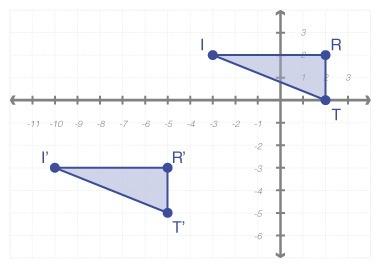For a science project, Sammy observed a chipmunk and a
squirrel stashing acorns in holes. The...

Mathematics, 20.04.2020 02:42 niyag2gi
For a science project, Sammy observed a chipmunk and a
squirrel stashing acorns in holes. The chipmunk hid 3 acorns in
each of the holes it dug. The squirrel hid 4 acorns in each of
the holes it dug. They each hid the same number of acorns,
although the squirrel needed 4 fewer holes.
How many acorns did the chipmunk hide?

Answers: 2
Another question on Mathematics

Mathematics, 21.06.2019 13:30
Drag and drop the answers into the boxes to complete this informal argument explaining how to derive the formula for the volume of a cone. since the volume of a cone is part of the volume of a cylinder with the same base and height, find the volume of a cylinder first. the base of a cylinder is a circle. the area of the base of a cylinder is , where r represents the radius. the volume of a cylinder can be described as slices of the base stacked upon each other. so, the volume of the cylinder can be found by multiplying the area of the circle by the height h of the cylinder. the volume of a cone is of the volume of a cylinder. therefore, the formula for the volume of a cone is 1/3 1/2 1/3πr^2h 1/2πr^2h πr^2h πr^2
Answers: 3

Mathematics, 21.06.2019 18:30
For this option, you will work individually. the pythagorean theorem can be used in many real-world scenarios. part 1 write your own real-world scenario where the pythagorean theorem can be applied to find a missing piece. you may choose to write a problem that is two- or three-dimensional in nature. be sure that you will be able to draw a diagram of your scenario. write out your problem and submit it for part 1. be sure to end your scenario with a question. part 2 draw a diagram of the scenario you created in part 1. you may draw by hand and scan and upload your drawing or create a computer-generated drawing for submission. be sure to label all parts and dimensions of the drawing. part 3 solve the question that you posed in part 1. show all of your steps in answering the question. for this option, you will need to submit all three parts for full credit—your real-world problem and question, the diagram that you created, and your work solving the problem, showing all steps. * note that your instructor is looking for your own original idea. while it is acceptable to use the internet for research and inspiration, academic integrity policies apply.
Answers: 1

Mathematics, 21.06.2019 22:20
The figure shows triangle def and line segment bc, which is parallel to ef: triangle def has a point b on side de and point c on side df. the line bc is parallel to the line ef. part a: is triangle def similar to triangle dbc? explain using what you know about triangle similarity. part b: which line segment on triangle dbc corresponds to line segment ef? explain your answer. part c: which angle on triangle dbc corresponds to angle f? explain your answer. asap
Answers: 3

Mathematics, 21.06.2019 23:00
The length of an intercepted arc of a central angle of a circle is 4 cm. if the radius of the circle is 5 cm what is the measurement of the central angle to the nearest whole degree
Answers: 2
You know the right answer?
Questions

Mathematics, 29.12.2019 21:31

Mathematics, 29.12.2019 21:31




Mathematics, 29.12.2019 21:31


Social Studies, 29.12.2019 21:31

English, 29.12.2019 21:31

Biology, 29.12.2019 21:31


English, 29.12.2019 21:31

History, 29.12.2019 21:31


Mathematics, 29.12.2019 21:31


Business, 29.12.2019 21:31


Social Studies, 29.12.2019 21:31

English, 29.12.2019 21:31




